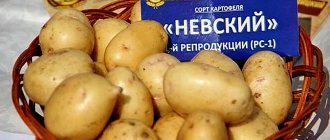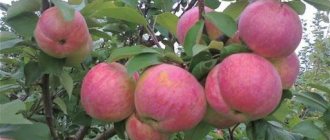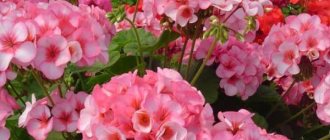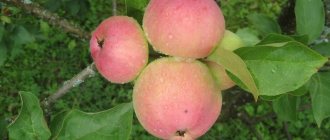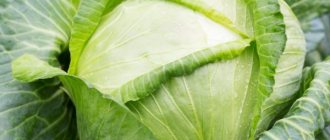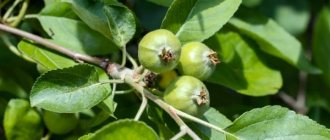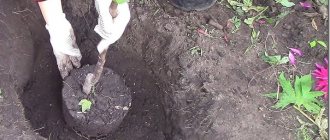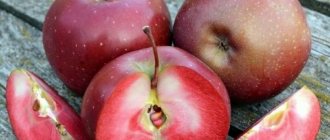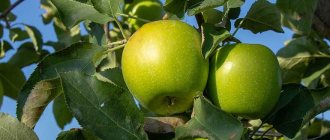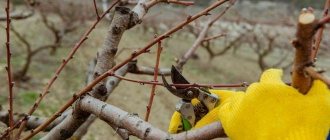Apple tree Papirovka: description
Papirovka is a fairly old and well-established variety, known and described back in the 19th century. Many people do not consider this variety valuable because the fruits are not stored for more than three weeks and quickly become stained and darken. There is an opinion among people that Papirovka and White filling are one and the same. But specialist breeders, having been debating this issue since the time of Michurin, claim the opposite - these are two close, but different varieties. Our heroine has larger fruits and a characteristic feature - a leathery seam on the fruit. Nevertheless, in the State Register the variety is listed as White Baltic filling .
The Papirovka apple tree thrives in the gardens of Europe and our country with a mild, humid climate. In central Russia, the apple tree may delay its ripening. In arid climates, an apple tree will bear fruit only with abundant watering.
This variety is widely used for breeding work. On its basis, more than twenty new hybrid varieties have been bred, with better characteristics of resistance to diseases and pests, for example, Daughter of Papirovka.
The tree is of medium height, grows no higher than 6 m, acquires a wide and not very dense crown of a pyramidal shape. The bark is mostly light, brown with a grayish tint; on young shoots it becomes brown and olive in color. The foliage is light green, without gloss, pubescent below. Active fruiting occurs mostly on ringlets - short and thick growths on horizontal branches. Papyra blooms in a beautiful light pink color, with a very large fragrant corolla.
Description of the fruits of the variety
The fruits themselves are of medium size, weighing from 90-150 g, the shape is round, somewhat ribbed, and a characteristic seam is noticeable on the thin skin. The larger the fruit, the more pronounced the ribbing. The color of the fruit is greenish-yellow, very light in color; when fully ripe, they acquire an alabaster hue, which is why the apple tree is often called Alabaster. These apples are not ruddy. The skin of the fruit is tender and thin, with a waxy coating, so the fruit does not tolerate transportation well and is not stored for a long time. The apple pulp is coarse-grained, incredibly juicy, sweet and sour, with small seeds in the chamber. Overripe fruits become mealy and greatly lose their taste characteristics.
The productivity of an apple tree depends on the age of the tree. Young trees produce a moderate harvest in the fourth year, up to 20 kg per season. You can pick up to 100 kg of delicious apples from an aged tree. There are reports of harvesting 200 kg of apples from a tree. But after a harvest year, usually the next harvest will be minimal, although this can be changed. You can find out how to make sure your apple tree bears fruit every year here. The fruiting period of Papirovka is about 50 years. Mature trees have a periodic yield pattern.
The Papirovka apple tree brings the harvest rather slowly and drops ripe apples, so apple tree owners have to think about how to preserve the harvest, because even in a cool place, fresh apples will not last more than three weeks. Apples are very pleasant in any processing: canning, dried fruits, baked goods, wine, jam, juices.
Since apples practically cannot withstand transportation and suffer from any slightest bruise, it is recommended to consume and process them at the point of collection.
During storage, the fruits begin to darken and rot; a large harvest often becomes a problem for gardeners.
Features of the variety
Papirovka needs pollinating varieties. That is, apple trees of other varieties should grow next to it, for example, Scarlet Anise or Antonovka.
The Papirovka apple tree is resistant to frost; at temperatures of -28°C and below, the tips of the branches may freeze. Immunity to diseases and pests - average, tendency to disease - scab. How to deal with this disease can be found in this article.
Our heroine does not lose her popularity in private farms due to its pronounced advantages: tasty, juicy, early-ripening fruits - in mid-July you can already feast on an apple tree that is unpretentious to grow.
Disadvantages of the Papirovka variety
- poor transportability,
- very short shelf life of fresh apples,
- fruiting is uneven, selective,
- inability to guess ripeness by color,
- frequency of harvest in the mature age of the tree.
Selection
Apple Padding close-up.
This variety comes from the Baltic countries . Described there in the first decade of the 19th century.
Since the middle of the same century, “Papirovka” has been cultivated already in:
- Poland,
- Germany,
- On the western lands of Tsarist Russia.
The Russian varietal name “Papirovka” is possibly related to the Polish word “Papierówka” (paper) or the Ukrainian name “papir” (paper). After all, this is the color that apples become when fully ripe.
Fruit sizes
In general, the apples are medium in size, and the largest fruits ripen on young trees, but the smallest ones are on “ancient” apple trees.
The typical weight of one apple is from 77 to 112 grams , but with appropriate care and feeding, young apple trees can often bear fruit weighing up to 189 grams each.
Planting an apple tree
When purchasing seedlings at the market or in a fruit nursery, pay attention to the following points:
- The tree must be at least one year old; such a seedling without branches takes root best;
- If there are lateral branches, expose the bark a little - a healthy seedling will have a green scratch underneath it;
- The roots of a young tree should be moist, not covered with mold and any growths, and intact;
- A good seller will offer a seedling in a clod of soil and will try to keep the trees in the shade;
- If you see a lot of dry areas, breaks and bare spots on the roots, do not buy such an apple tree;
- Ask to cut the root; if it is white at the cut site, then the seedling is healthy;
- If the root system is brown, it means the trees are frozen.
Features of planting Papirovki
The timing of planting apple trees is in the spring, provided the soil is warm, preferably in the absence of repeated night frosts: April, from the beginning or in the middle of the month. In southern latitudes it can be planted from the end of March.
If you don’t have enough time to plant apple trees in the spring, you can plant a fruit tree after the leaves fall, in the fall. Take care at least a week in advance to dig the planting hole. When planting a tree in the fall, carefully tear off all the green leaves and be sure to insulate the apple tree for the winter - cover it with moss from below, cover it with spruce branches and nylon on top.
Choosing a place to plant an apple tree on a site - try to determine an area with excellent lighting and good drainage so that the water does not stagnate. The Papirovka apple tree is quite unpretentious in terms of growing conditions, but it is critical of the close occurrence of groundwater. If there are clay soils on the site, add sand and humus. If you have acidic soils, you need to improve them by adding lime compounds and humus. When planting several apple trees, keep the distance between them at least 4 meters, leave 2 meters from the wall or fence.
Planting pit for apple tree
- when planting in spring, it is optimal to dig it out in the fall, or at least two weeks before spring planting (to allow groundwater to drain);
- When planting in autumn, you should dig a hole at least a week before planting.
The smallest pit size is determined to be 70 cm deep and 70 cm diameter (on fertile loamy soils). On heavy soils, the dimensions should be increased to 90 cm.
Put the top, fertile layer of soil aside, it will come in handy. The lower layers can be used for any other purpose.
At the bottom of the hole (it is especially important to do this on clay soils) lay a ten-centimeter layer of drainage (use crushed stone with sand, or broken brick).
Mix the soil with your hands, half the top fertile layer with humus (at least a bucket), mineral fertilizers (half a glass of superphosphate) and wood ash (two glasses).
Pour the resulting fertilized earth mixture into the hole two-thirds full, fill it with a bucket of water and let it sit for a week.
Planting a seedling
Before planting, keep the roots of the seedling in a clay mash for a day - make a mixture of clay, manure and water with the consistency of liquid sour cream. The tree will be better accepted on the site this way. If it is not possible to keep it in a mash, place the roots in water for a day. Before planting, slightly dry the root system.
On the day of planting, remove enough soil from the hole so that the root system is comfortably located in the hole.
When planting a tree vertically, place a wooden stake (stake) nearby to secure the young seedling. Carefully straighten all the roots and cover them tightly with fertile soil so that the root collar remains 5 cm above the ground level.
The soil around the tree must be compacted and a cushion made to retain water when watering.
Tie the trunk of the seedling to the stop with a figure eight.
Water the tree with 3 buckets of water and mulch the planting circle with straw or peat.
We wrote in more detail about planting apple tree seedlings earlier.
Features of care
Papirovka does not require more care than other apple trees. During the dry season, the apple tree loves active watering.
Seasonal care of a fruit tree involves stages according to the seasons.
Spring care
When examining, pay attention to wounds and damage when treating them. It is also important in the spring to cut off all old and broken branches, apply fertilizing and carry out preventive treatment with insecticides and disinfectants before the leaves bloom.
The first fertilizing is done immediately after the snow melts : mix 4 buckets of humus or compost with 500 g of urea, add a little complex mineral fertilizer (for example, nitroammophoska 1 tbsp. L) and apply this whole mixture in circles for digging.
The second feeding is done in May, during the flowering period . The apple tree will like the following composition: organic matter (chicken manure 2.5 liters, urea 1 cup and settled manure 0.5 liters or humus), add half a cup of superphosphate and two tablespoons of potassium sulfate. Bring it in circles under the digging.
Summer care
- it is important to monitor watering,
- loosening and weeding,
- and prevention and control of pests and diseases.
The Papirovka apple tree needs abundant watering more than other varieties of apple trees at a young age. In the first year, 2-3 buckets every two weeks are enough for the tree. If the weather is dry, then watering should be done once a week. You can run the hose in a thin stream for three to four hours.
Three-year-old trees and older do not need such frequent watering; four heavy waterings per season are enough.
After each watering, loosen and fluff up the soil in the tree trunk circle, while removing weeds. Mulching is necessary for young trees with a fairly thin layer in the summer and moss in the winter.
Autumn care
- During this period, pre-winter fertilizing is applied,
- whitewashing the trunk,
- additional pest control
- and preparing the tree for the winter cold.
The last fertilizing is done with urea (750 g diluted in a 10 liter bucket of water), applied to the tree trunk in dry weather.
Whitewashing of mature trees is done with a mixture of water, lime and glue. Young trees are coated with chalk.
At the end of October, the tree must be watered for the winter, thoroughly pouring up to 8-10 buckets of water per 1 m2.
Pruning is very important in the first three years. They form a crown, leaving powerful branches that grow more horizontally. Opposite them, branches located at an acute angle are removed.
The branches are cut by a third, the lateral branches are brought under the skeletal level. Moreover, pruning is done mostly of the upper branches, the lower branches are trimmed very little.
From the moment of active fruiting, the apple tree only needs to trim old and damaged branches in the spring, before flowering. If there is a need to shorten young branches, then this is done by 1-2 buds.
Mature apple trees need rejuvenation - all old and non-fruit-bearing branches are cut off with pruning shears. Branches on which growth is weak (up to 10 cm annually) are removed, leaving branches that have grown by 25 cm over the year.
Features of growing varieties in different regions
Ural
There are two features of growing this variety in the Urals:
- The first is the mandatory whitewashing for burns in February.
- The second feature is the closing of the trunks of young apple trees until the bark is completely coarsened in October. Mice can simply kill a tree by eating its young bark.
Belarus
If you want to get a lot of apples in Belarus, then you need to take care of the correct and timely treatment of trees from scab and other diseases .
It is also worth noting the need to add magnesium, molybdenum and manganese when feeding. Since most of the Belarusian soils are severely lacking in these elements.
Pests and how to deal with them
Papirovka's pests are the same as those of other apple trees.
Aphids are small insects that suck juices from leaves and shoots until the vegetative parts of the tree dry out. You can fight this pest quite effectively by spraying a decoction of tomato tops, wormwood, and chamomile. Pre-spraying with soapy water and then dusting with ash works well. It is effective to collect the affected bark. Before the flowering stage, insecticides can be used. Nitrafen gives an excellent effect in early spring, before the leaves appear.
The flower beetle is a beetle with a proboscis that attacks the buds of a flowering tree, which leads to a drop in yield. Since it is not recommended to use chemicals during flowering, a mechanical method is used to collect bugs in the early cold morning. Numb pests are simply shaken off onto the litter and burned. Can be treated with Karbofos at the stage of bud opening.
The most wormy pest is the codling moth , which affects almost the entire apple crop. The fight against larvae must be carried out using chemical methods in early spring and autumn. It is also important to collect all fallen apples.
the leaf roller preventatively - whitewashing the trunks with the addition of Karbofos, as well as stripping the trunks of damaged bark under which the larvae are located.
Advantages and disadvantages
Padding has a number of advantages:
- apples are one of the first to ripen - already at the end of July you can taste the first fruits. In addition to eating fresh, you can make juice from them;
- It is considered a high-yielding summer variety - up to 50 kg of apples can be harvested from one apple tree. Ripe fruits stay firmly on the branches and do not fall off prematurely.
The apple tree of this variety is early-bearing - fruiting occurs 3–5 years after planting, which is always popular with gardeners.
Padding gives a good harvest - up to 50 kg of apples from one tree
The disadvantages include the following:
- Despite all their precocity, apples do not last long - the shelf life in the refrigerator is only a month, and then the fruits begin to lose their taste;
- papilion does not tolerate climate change well, which makes it significantly more difficult to grow it in regions where severe frosts in winter are a common occurrence;
- Apple trees bear fruit every year, but over time this figure decreases.
Apple tree diseases, what to do
Black cancer on an apple tree
Papirovka has average immunity to diseases, with particularly notable resistance to Scab. This disease actively develops when the crown is thick, there is a lack of pruning and there is an increased level of moisture. Dark green spots first appear on the vegetative parts of the tree and on the fruits themselves, which soon turn brown.
Disease prevention has been carried out since the fall, by treating, simultaneously with the removal of affected apple areas, with Fitolafin or Abiga-Peak.
When areas appear on the apple tree that look like burnt - Black cancer, all affected branches are cut off, the bark is cleaned, and the top is covered with a lime solution.
Prevention of diseases is regular disinfection of apple trees with a urea solution and subsequent treatment with a solution of soda ash. An excellent effect is obtained when using Bordeaux mixture.
Official registration and zoning
The Papirovka apple tree variety is included in the State Registers of Russia (since 1947), Ukraine (1950) and Belarus (1954) as zoned and approved for cultivation in almost the entire territory of the countries of the former Union. For a long time it was the leader among early summer apple trees and was actively used in breeding work to develop new varieties. Today, “Papirovka” is significantly inferior in popularity to its own, more advanced “descendants” and is cultivated mainly in small garden farms and on personal plots.
The variety owes its name to the continuous (without any integumentary blush) light straw-yellow color of the fruits, covered with a whitish coating.
Despite the fact that most professionals, in particular Academician E.V. Sedov, call this apple tree “long outdated and mediocre,” summer residents continue to value it for its frost resistance (at the level of “Antonovka ordinary” and “Autumn striped”) and early ripening fruits and high annual yields.
Apple tree propagation methods Padding
The most commonly used ways to propagate an apple tree are planting seedlings and propagation by cuttings and layering. If planting seedlings is associated with costs, then cuttings and layering will save money.
Cuttings
For this type of propagation, cuttings must be prepared. This can be done in spring or autumn; in summer it is not recommended. Cuttings should be taken from the bottom of the apple tree, and these should be growth from the last season, as older cuttings may break.
Cut the cuttings early in the morning to 10-15 cm, treat them with a growth stimulator according to the instructions and place them in a jar of warm water in a sunny place. Roots should form in a few weeks. When they grow to 8 cm, you can plant the cuttings in prepared fertilized soil, in a trench, closer to each other. It is necessary to water small seedlings and loosen the tree trunk every two weeks; loosening can be done more often. The best way to retain moisture is to mulch with straw or peat.
Broken branch method
This is a more improved method of propagation by cuttings with the creation of a special rooting stimulus.
In September, select a young one-year-old shoot and break it so that the bark does not tear. Secure the break with adhesive tape. In November, separate the broken shoot from the parent tree using a knife. Form the cutting so that a few side buds remain and cut off the very apical bud. Place the cuttings in a dark plastic bottle with 300 ml of water and 3 tablets of activated carbon on a sunny windowsill. After about 21 days, roots appear. As soon as they grow 5 cm, plant the cuttings in prepared soil in a bucket on the balcony, and in April in open ground.
How to transplant an apple tree to another place
Of course, it’s best to immediately choose a place so that you don’t have to replant. One-year-old trees tolerate replanting best. Starting from three to four years of age, the volume of the root system is about one meter in diameter, and it is practically impossible to carry out a transplant “with one hand.” The best time for transplantation is autumn. A hole, in accordance with the root system of the tree to be transplanted, is dug a month before planting, making it approximately one and a half times larger than the coverage of the roots. Preparation of the planting pit and the planting algorithm differ little from planting seedlings above.
What type does it belong to?
Apple trees are a summer variety . This variety was bred in the Baltic states and prefers a warm climate.
Apple trees of this variety are among the first to bear fruit. The apples fill with juice and ripen by the end of July .
Ripe fruits hold tightly and do not fall off. They are ready for consumption immediately after collection.
However, the fruits of this variety are poorly preserved . During long-term storage, the pulp becomes loose and loses its taste. Therefore, the maximum shelf life of the fruit in the refrigerator is 1 month.
Summer varieties of apple trees also include Melba, Gornoaltaiskoe and Gornist.
What to do if the apple tree does not bloom or bear fruit?
If your Papika does not bloom or bear fruit from the very beginning after three years of age, then the problem is most likely a lack of pollination. Since the apple tree is not capable of self-pollination, it is necessary to grow apple trees of other varieties nearby. It is also important not to apply any chemical treatments during flowering so as not to scare away the bees.
It is quite possible that your apple tree is still too young, or already at an advanced age. Do not exclude violations of the planting algorithm, which leads to problems in the root system. Improper pruning to remove fruiting branches with ringlets can also result in a lack of yield. Damage can be caused by pests that destroy young buds and improper feeding with an excess of nitrogenous substances.
Effective methods to provoke fertility are ringing and bending branches.
Variants and subtypes
Semi-dwarf
This is not a subspecies, it is simply Papirovka grafted onto a semi-dwarf tree.
as anything special , and in the north it also freezes out faster and “splits” into the graft if you don’t prune it correctly and on time.
Amber
This is either the new trade brand “Yantarnaya Papirovaya” or the “Papiro-Yantarnaya” variety.
In private nurseries it is obtained from crossing the Papirovka and Yantar varieties.
Such apple trees are not listed in the state pomology!
Baltic
Another “miracle of trade”. Because in reality it never existed . There was simply a synonymous name, that is, a name identical to the name “Papirovka” - “Baltic”. There are no other “Paper” products in the Baltics!
Ural
Here is another “trade” variety - “Ural Papirovka”. In reality, the variety is considered the daughter of “Papirovka”.
And this apple tree is correctly called “Ural Bulk”, its father is the “Red Ranetka” variety, but its mother is “Papirovka”. But this is not at all fashionable, it’s undignified, so they invent something that doesn’t exist.
Summer
This name (Summer Papirovka) is another advertising gimmick . Because the Papirovka variety itself is already “summer”. So it is not advisable to buy this apple tree from such sellers!
Altai
Altai ruddy apple tree variety.
“Altaiskoe Rumyanoe” is a little-known variety, but many people know “Papirovka”.
This is often how they sell it, passing off one variety as another.
Red
Another attempt by incompetent sellers to pass off the “Ural bulk” variety as a new product, “Red Papirovka”. Currently, there is no such apple tree in pomology .
Honey
The no less famous variety “Lungwort” is often sold to inexperienced summer residents under the name “Honey Papilka”.
But this is not “Papirovka” at all, but it is delicious.
Winter-hardy
Another publicity stunt . “Papirovka” itself is quite winter-hardy. Therefore, this is hardly a new product; it’s not worth it and people are chasing it.
Carefully! You should not buy a seedling from those who deliberately change the name of the apple tree variety. There is no guarantee that there is even an apple tree there!
